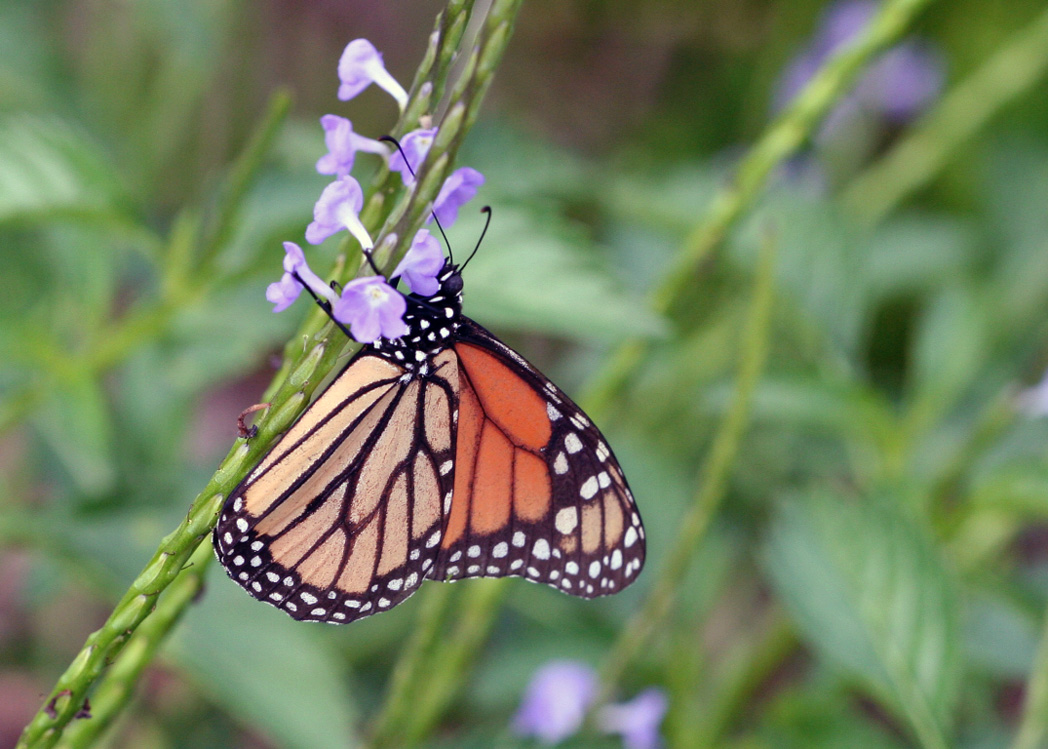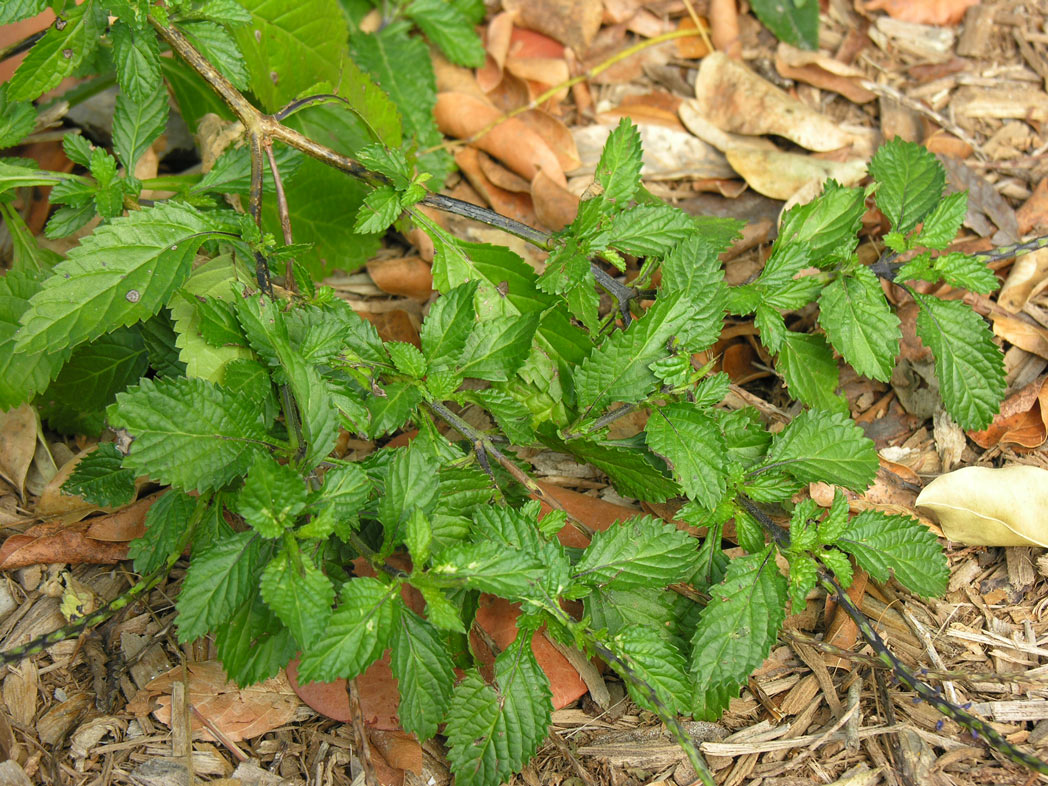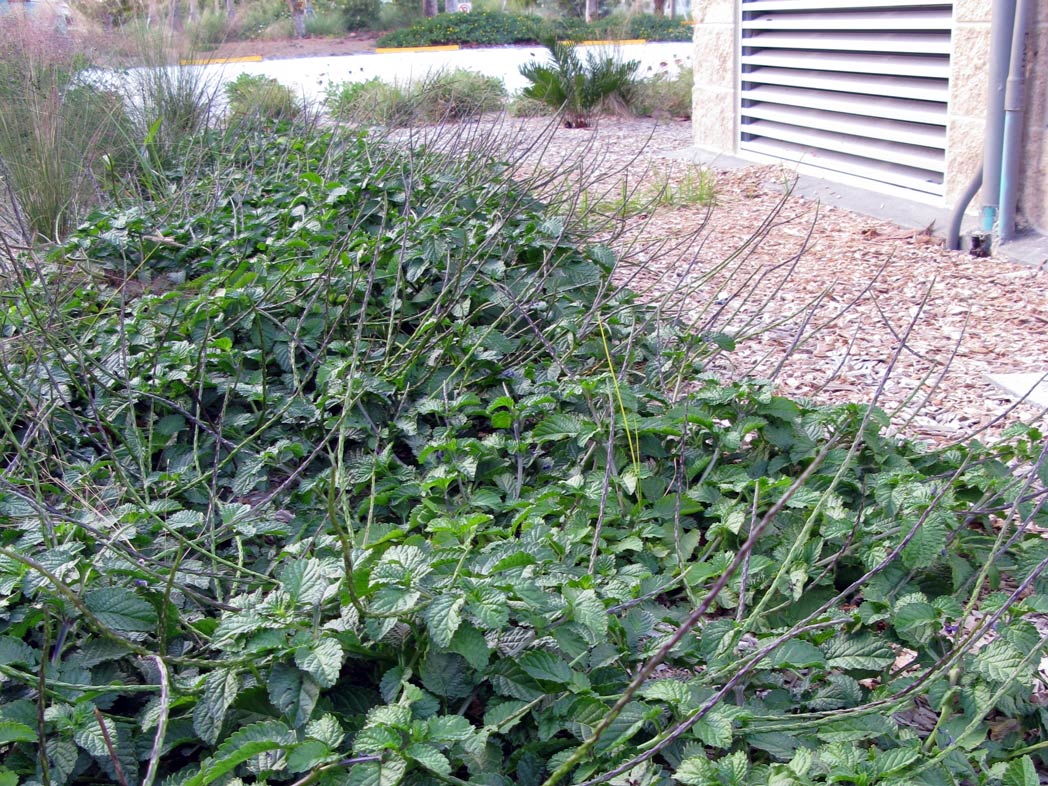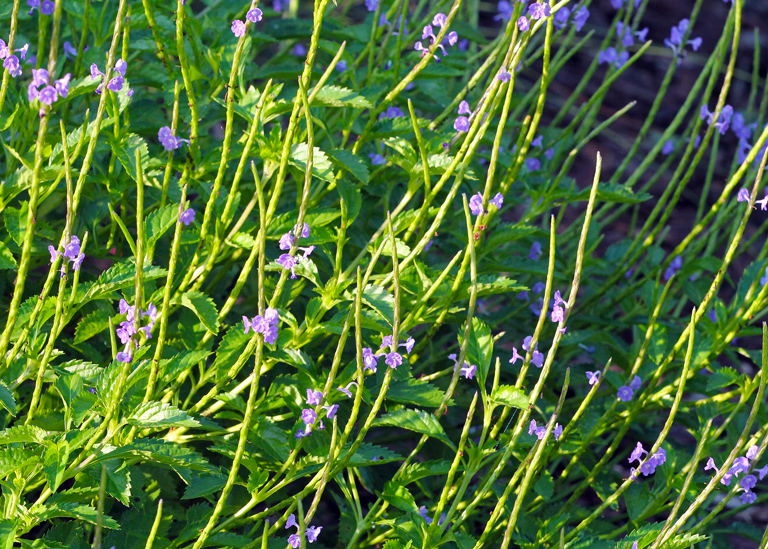Blue porterweed
Pictured above: Blue porterweed (Stachytarpheta jamaicensis) by Mary Keim. Click on terms for botanical definitions. View post as a PDF.
Blue porterweed (Stachytarpheta jamaicensis) is a low-growing, sprawling wildflower. Found in coastal dunes, shell mounds and disturbed areas, it typically flowers in the summer, but may flower year-round in South Florida. It is an excellent addition to a butterfly garden, as it is the host plant of the Tropical buckeye (Junonia evarete) and is a nectar source for many butterfly species including the Clouded skipper (Lerema accius), Gulf fritillary (Agraulis vanillae), Red admiral (Vanessa atalanta), Monarch (Danaus plexippus) and Julia (Dryas iulia).

Blue porterweed’s diminutive tubular flowers are purplish-blue with a white “eye.” They are born on long, narrow spikes. Flowers open for only one day and won’t open on very cloudy days. Leaves are dark green and ovate to lanceolate with serrate margins. They are oppositely arranged. Stems are branched and angled. Seeds are inconspicuous nutlets.
Blue porterweed isn’t just for pollinators. Much of the plant is edible to humans. Flowers may be eaten raw and have a mushroom-like flavor. Flower spikes can be used as you would a bay leaf to season soups or stews. Leaves can be dried and steeped into a foamy tea or brewed into beer. This foaming property is likely the origin of the common name, porterweed, referring to the porter style of beer the tea resembles.


The genus name Stachytarpheta is from the Greek stachys, meaning “spike,” and tarphys, meaning “thick” or “dense.”
Family: Verbenaceae
Native range: South Florida, east Central Florida, Hillsborough and Wakulla counties
To see where natural populations of blue porterweed have been vouchered, visit florida.plantatlas.usf.edu.
Hardiness: 9B–11
Soil: Well-drained sand, clay, loamy or calcareous soils
Exposure: Full sun to minimal shade
Growth habit: 1–3’ tall with 2–3’ spread
Propagation: Seed, cuttings
Garden tips: Blue porterweed is drought tolerant, moderately salt tolerant, and does well in poor soil. Its low-growing habit makes it a nice groundcover in dry, sunny areas. It also does well in a container or in a mixed wildflower garden. Blue porterweed can be pruned as needed to maintain its size and shape, or cut back significantly in spring to encourage more growth.
Caution: The non-native Stachytarpheta cayennensis is often mistaken for the native species as both have the distinctive purplish-blue flowers. S. cayennensis, however, is recognized as a Category II listed invasive species because it has escaped cultivation and is altering native habitat. It should not be used. S. cayennensis has a more erect habit than the native species, which has a more prostrate habit. Be sure to purchase your plants from trusted sources to ensure you are getting the native species.
Blue porterweed is often available at nurseries that specialize in native plants. Visit PlantRealFlorida.org to find a native nursery in your area.

